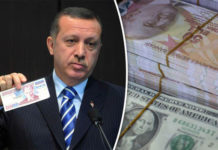How Foreign Brands Court Indian Consumers
Blessed and plagued with its own eccentricities, India is proof that products that are successes elsewhere may need a new twist.
An estimated 1,700 new products hit the shelves in India last year, according to the chairman of Nestlé India. But the success rate may be as low as 5 percent. “This is the challenge that is India,” Suresh Narayanan told the audience at the 13th annual India Business Conference, organized by the South Asian Business Association at Columbia Business School and cosponsored by the Chazen Institute. And, he warned, just because an item is a blockbuster in the United States or other countries doesn’t guarantee a thing in India.
The same cautionary tale holds true for services, according to Sandeep Malhotra, senior vice president, ACH Systems, global products and solutions, at MasterCard International.
The rush to tap India’s blossoming middle class by both homegrown entrepreneurs and multinationals means competition is rampant. In the current hyper-competitive environment, “Indian consumers are spoiled for choices,” Narayanan noted, allowing buyers of products to become increasingly demanding.
Today’s Indian consumers possess three obvious traits that necessitate innovation, he said. They are “flirtatious,” meaning they will happily sample numerous new products. They are also “polygamous,” so after a dating period, they will finally settle down to not one, but two or three brands. Still, they remain value conscious, suggesting they won’t necessarily balk at high prices but expect a 1,000-rupee product, for example, to deliver a full 1,000-rupee value. “Luxury and affordability,” Narayanan said, “live side by side.”
Nestlé’s Blueprint
Nestlé caters to India’s marketplace through three fundamental strategies:
-
As elsewhere, products must display “good genes,” said Narayanan, meaning quality is all-important and any false efficiency that cuts back on a product’s underlying quality is “just sad.” He indicated that this attention to high standards has helped the Maggi brand regain its status as India’s favorite instant noodle after the government temporarily banned Maggi from shelves in 2015 after finding packages contained high levels of lead.
-
“Contemporary connect” is a two-fold concept. Literally, companies should put digital at the forefront of every marketing campaign. He said companies also must connect with the trends that consumers are living in their everyday lives. Pointing to the rise of Chinese restaurants beyond India’s big cities, Narayanan said Maggi has added more Chinese flavors. Similarly, the trend to “out of home” eating has led the company to create Nestlé Professional, a division that caters to the foodservice industry, and Maggi Hot Spots, or kiosks that sell noodles and other foods directly to consumers on-the-go.
-
Practice “future fitness,” meaning companies must build on what they already do well to anticipate the future. The approach involves not just R&D but crystal-ball gazing to prepare for needs. For example, in India, 65 percent of children suffer from anemia. Nestlé is adding supplements to its noodles and other products. Narayanan said the nutrition trend could well extend to heath in general, and specific food products could soon target diabetes, obesity and heart disease. “Nestle has a competitive, worldwide healthcare business,” he suggested. “It is just good business to play to your strengths.”
MasterCard’s Digital Model
Sometimes called “the most cash-dependent country in the world,” India conducts 90 percent of transactions in cash, which is indeed a powerful challenge to any business that relies on consumer credit. Neeraj Singhal, who works with early-stage tech companies and venture capitalists, spent three years as head of expansion at Uber India and is currently COO of Swipecast, an online company that allows ad agencies, fashion retailers and designers to hire models, photographers, makeup artists and art directors without going through an agency. He said India became the first country in Uber’s portfolio to accept cash when the ride-sharing service launched in Bangalore in 2013.
Although the government’s encouragement of bank accounts and digitization could smooth the way for consumer credit, few businesses have the ability to accept credit cards or even bank checks.
Under the traditional credit card model, merchants collect their transaction money from the credit-card company after the customer swipes a card. But as it entered India in a big way last year, MasterCard redesigned its flow completely, switching responsibility to consumers to “push” cash from their cell phones to merchants, making the cash transfer simultaneous with the purchase.
“Cash customers will become digital, but only through education,” Malhotra predicted. MasterCard has earmarked $800 million for Indian data centers, marketing and education of both consumers and merchants. The company’s messaging to merchants points out acceptance of MasterCard can lead to higher value, repetitive purchases compared to cash, which is wholly dependent upon the amount of rupees in a customer’s pocket. “We have trained 200,000 merchants at this point, with plans to train another 500,000 in the next two to three years,” he said.
Tata Finds an Online Niche
Established local brands are also extensively tweaking proven formulas as they tackle new opportunities. In some cases they borrow experiences from the rest of the world, but polish their presentation with a homegrown twist.
Take Tata Cliq, the 149-year-old brand’s new ecommerce offering launched last year. “We are well known in a series of traditional industries,” said James E. Shapiro, resident director, Tata Sons (North America), which oversees several incubators for the company. “We wanted to grow with the growing middle class and move out of carbon-intensive industries. We asked: ‘Where is the future going?’”
Unwilling to compete against the Amazon behemoth, Tata developed an omni-channel online shopping mall. The website rents space to selected, well-respected brands, and lets each retailer control its own shopping milieu. Shapiro said the approach achieves brand authenticity, attracting 7-8 million customers a month and “lots of interest from international brands.”
Despite all the upheaval, the panelists, to a person, were enthusiastic about the choices now lining India’s shelves and the variety in its burgeoning service industries. Indians want to try things out,” said Padmaja Chunduru, country head, US operations, State Bank of India, who called her company “the most digitalized bank in India.” An appetite for experimentation has always been part of the country’s culture, she said, and it doesn’t hurt that the median age in India is just 27, making the population less invested in older traditions and more comfortable with change.










